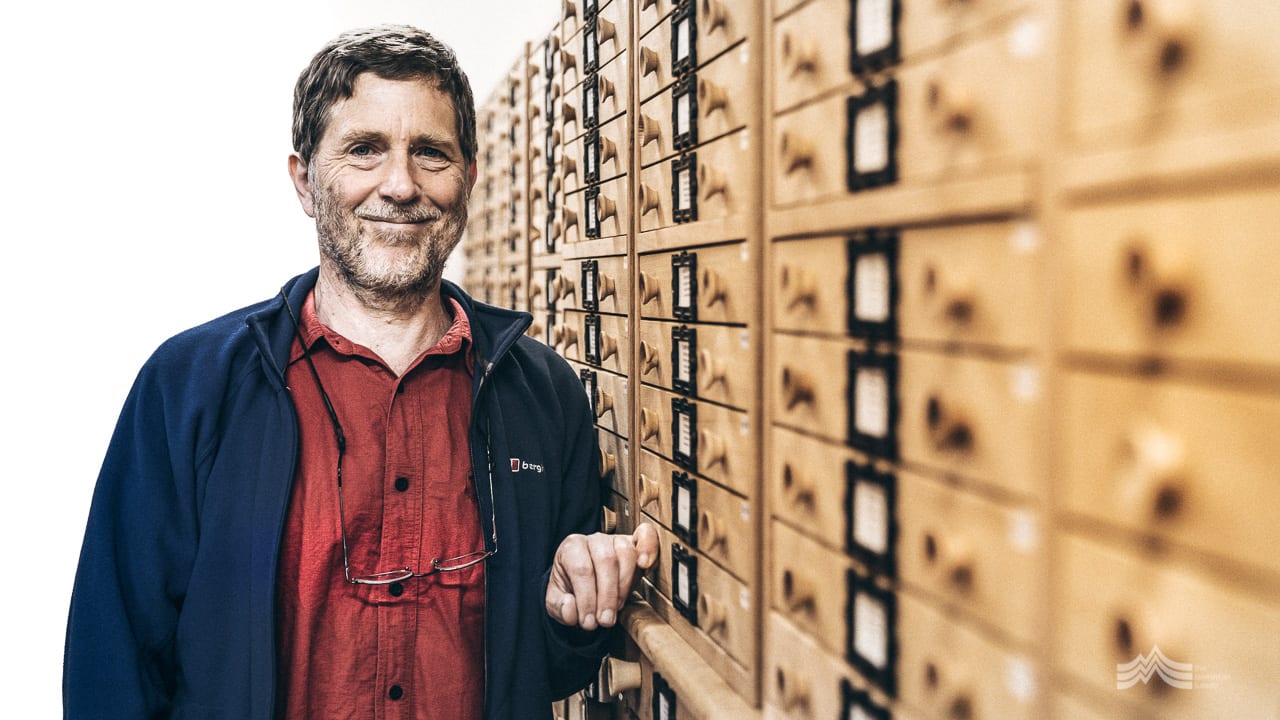“Back in the day, our museum was about showcasing the world to Tasmanians,” says Dr Simon Grove, Senior Curator of Invertebrate Zoology at the Tasmanian Museum and Art Gallery. “However, things have changed somewhat and today it’s the other way around. Our museum is about bringing the best of Tasmania to the world.”
Simon grew up in the English countryside, the son of encouraging parents who fostered his love of the natural world. “I think most kids have that same innate interest,” he says softly. “Most of them are fascinated by what nature has to offer, it’s just that somewhere along the way it gets lost. I think I’m just someone who maintained that child-like wonder. For me, it never wore off.”
Simon describes an idyllic early childhood in Hampshire, half-way between London and the southern English coast. “I grew up exploring rambling country lanes and nearby woodlands, and we spent many a family holiday beachcombing and exploring the rock pools on Britain’s wild, west coast beaches. In fact, my family were quite competitive when it came to collecting elusive cowrie shells.”
When not out discovering, Simon was a child with his nose in a book. “I read a lot too,” he smiles. “Willard Price adventure books were a firm favourite. I loved anything related to exploration and expeditions. There were fabulous encounters with nature and the epic stories of the South Seas to be had between the pages of those books. Books were often on my birthday wish-list and I still recall being delighted to receive the ‘Standard Catalog of Shells’ for my 10th or 11th birthday.”
From early memories collecting milk bottles full of earthworms to establishing his own scrap-book ‘herbarium’ of pressed wildflowers by age six, Simon’s lifelong passion for the natural world has never wavered. Hovering over a mug of hot tea he explains, “The shells started with my grandmother. She gave each of her grandchildren a little gift bag of Polynesian seashells, though ostensibly they were a gift from Father Christmas. I’ve loved them ever since and have never looked back.”
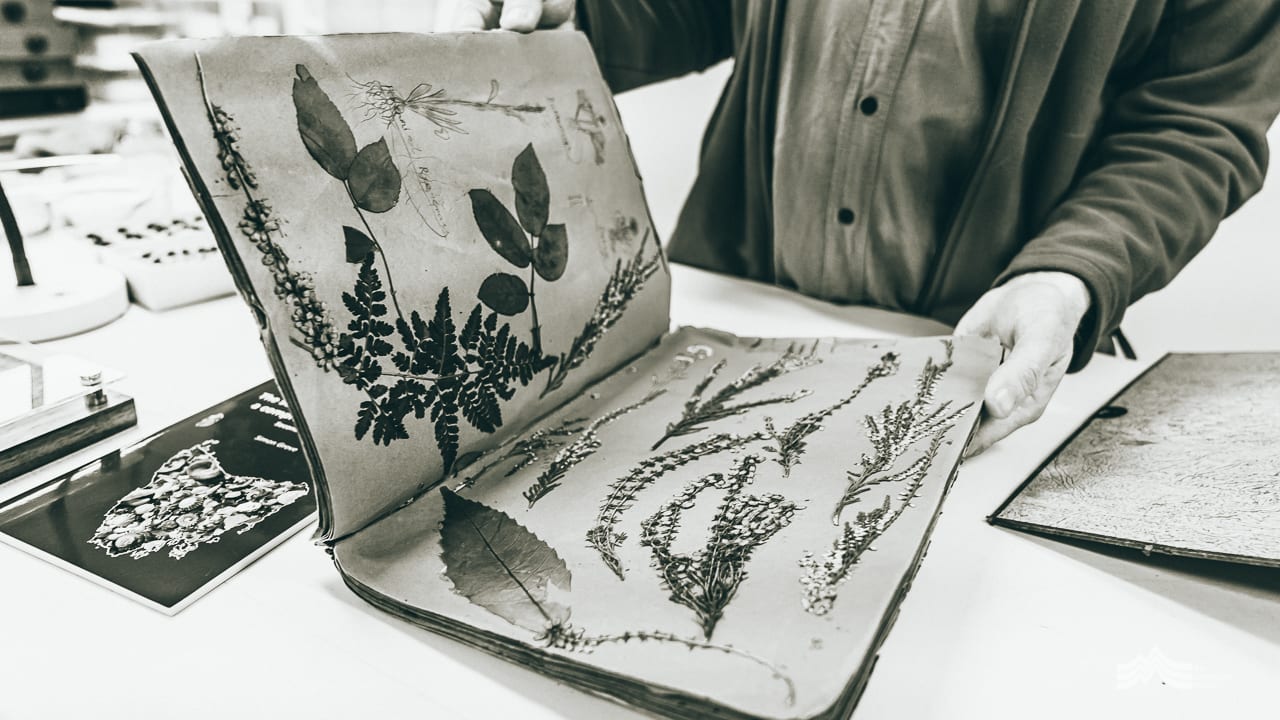
At nine years of age Simon was volunteering at his local museum. “Mrs Thompson took me under her wing there and certainly nurtured my interests,” Simon recalls, smiling. “She guided me through the Victorian-era shell collection as we identified them and put them on display; they ‘paid’ me in shells! Then we moved on to the taxidermied bird collection, followed by the butterflies and moths. It wasn’t long before my knowledge outstripped hers.”
It doesn’t take long to build a picture of Simon’s world, nor does it take long to lose yourself in his stories. There’s a clear reason that this Tasmanian-based naturalist was recently awarded the Australian Natural History Medallion for 2019. To put things quite simply, people like Simon are living treasures. They are the keepers of invaluable knowledge about the natural world and – importantly – the medium through which that knowledge can be shared with the rest of us.
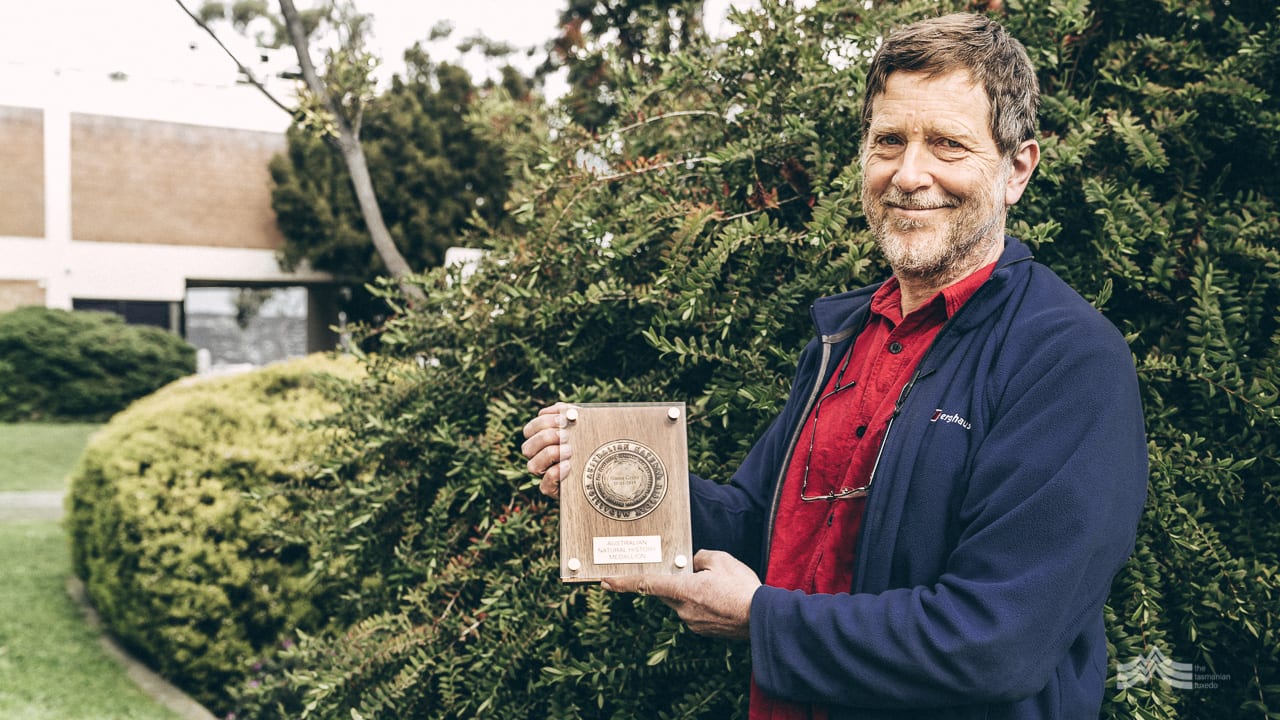
The modern world gives little kudos to taxonomy, and even less to invertebrate taxonomy. Glamour does not lie within the endless shelves of a museum’s collections, and taxonomy gets short shrift in modern biology courses. Its importance is easily overshadowed by more sexy disciplines such as genomics and biotechnology, and by other scientific issues that legitimately claim the attention of the world’s media such as climate change, overfishing and the threats facing the more ‘charismatic’ birds and mammals.
Ornithologist, entomologist, malacologist, botanist, forester, conservationist. Simon has studied, surveyed and documented thousands of species. However, his specialisations have remained entomology – the study of insects, and malacology – the study of molluscs.
“When I look back, I think I didn’t really enjoy school all that much – at least not high school. I also didn’t receive career advice of any real use…it seemed no one really knew where to steer me. It wasn’t until I was sent in the direction of polytechnics that I really found what I was after. Once I discovered it was actually possible to do a degree in marine biology and conservation I experienced a real feeling of liberation. A polytechnic by the sea at Plymouth was the icing on the cake.”
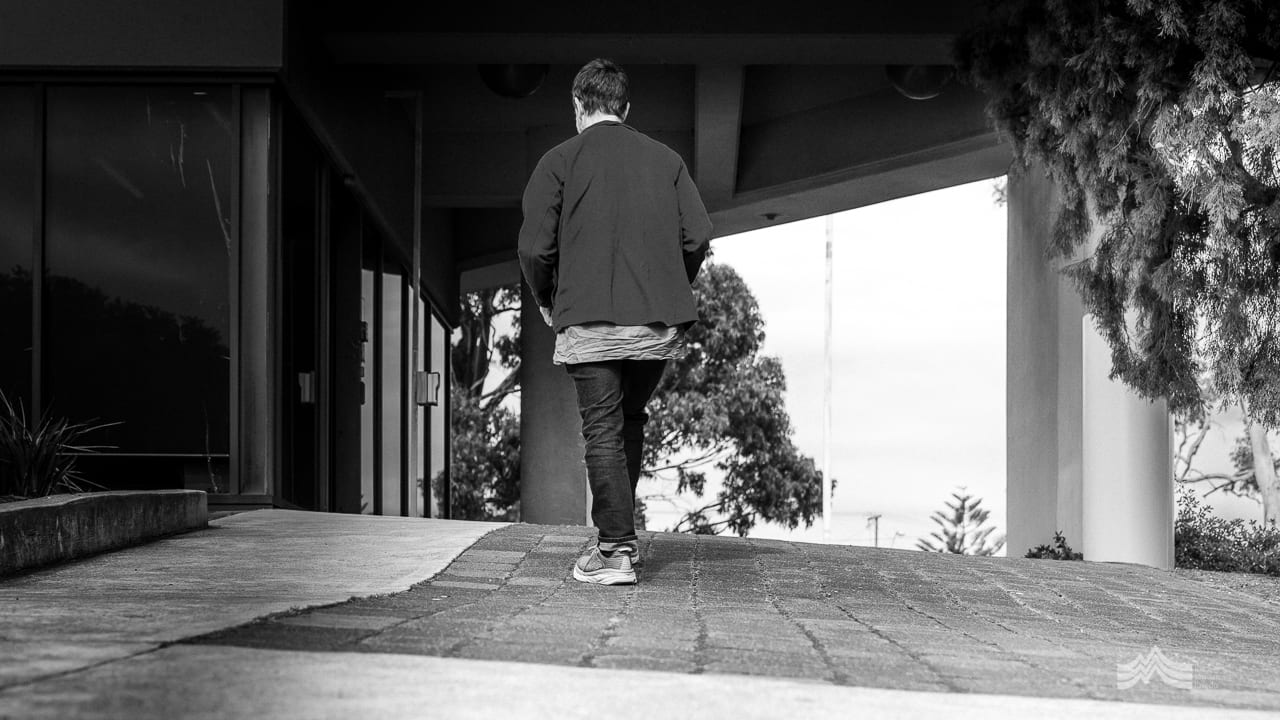
In the early 90s Simon turned his attention to conservation management of the world’s forests. It was whilst completing a Masters degree that he met his future wife Chris, a likeminded soul also skilled in forestry matters. Together the pair travelled extensively, working in Uganda and Indonesia on forestry and conservation training projects, before arriving in Cairns in 1997 for Simon to undertake his PhD on saproxylic insects and sustainable tropical rainforest management.
“Saproxylic invertebrates are those that are dependent on dead or decaying wood. I often refer to this line of study as ‘deadwoodology’.”
A position as a conservation biologist with Forestry Tasmania brought Simon and Chris, and their two young sons, southward in 2001. Over the ensuing decade, Simon’s research and publications centered on ways to improve forest management to sustain biodiversity. Using beetles, birds and fungi as key study groups, he greatly expanded the Tasmanian Forest Insect Collection (TFIC) and developed comprehensive websites to help others in identifying and understanding the ecology of thousands of local species.
Working with multiple agencies towards developing strategic management plans for some of Tasmania’s threatened species has also consumed Simon’s time. The swift parrot, giant velvet worm, Mount Mangana stag-beetle – the list goes on. He’s also been instrumental in kick-starting the development of planning and monitoring tools for managed forest landscapes and their reserves and old growth forests.
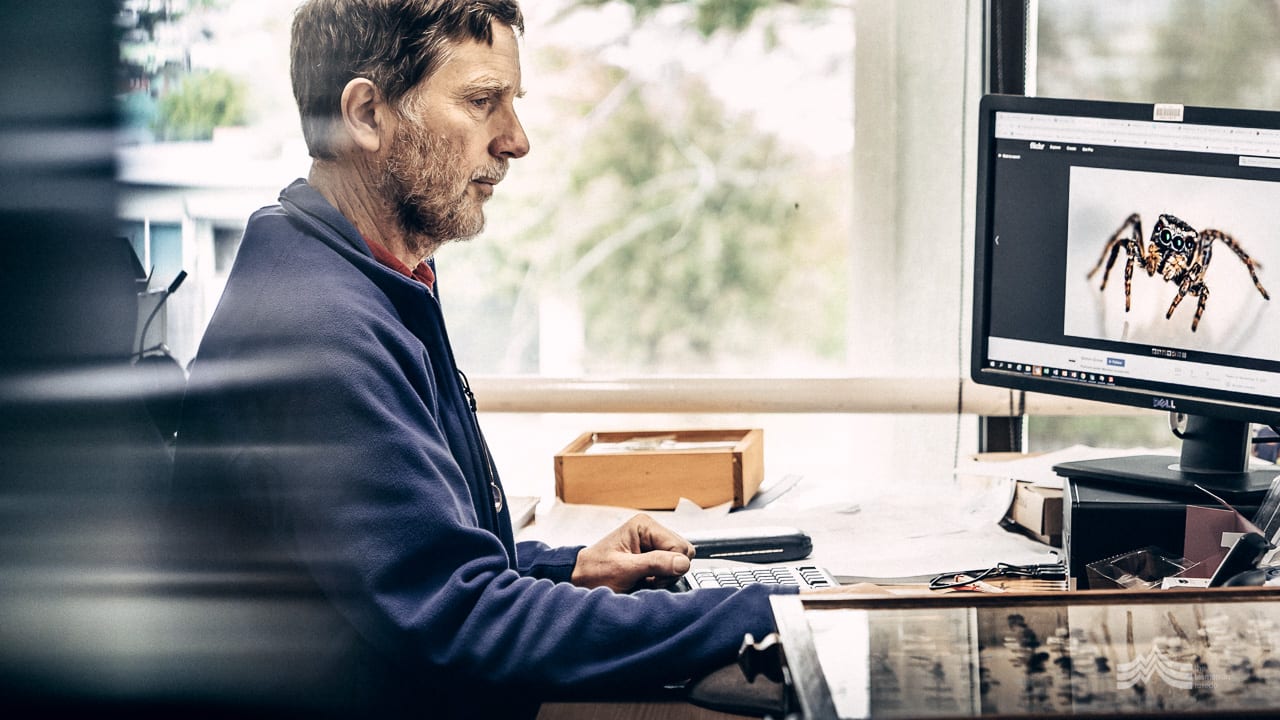
“Soon after we moved to Tasmania, I was welcomed into the fold of the Tasmanian Field Naturalists Club,” says Simon. “Like most similar groups around the country, they are a mix of people who share a common interest in the natural world. The Tasmanian club was formed in 1904 and continues to actively encourage all aspects of natural history, and to advocate the conservation of our natural heritage.”
Simon quickly became a presenter of evening talks and the leader of field trips, as well as contributing to the annual journal, The Tasmanian Naturalist, including a stint as editor. “I was also a member of the Tasmanian Marine Naturalists Association and led many local excursions as well as contributing to a partial rewrite of the popular field guide, Between Tasmanian Tides,” he explains.
“Settling here in Tasmania I rediscovered my love of seashells,” says Simon.
Over the course of a decade, Simon comprehensively surveyed over 400 Tasmanian beaches, amassing an amazing collection of over 67 000 individual seashell specimens, many of them microscopic. “My local beaches at Taroona have proven particularly rewarding,” he explains. “They have yielded over 350 different species.” Indeed, Simon’s knowledge led to the publication of his definitive book The Seashells of Tasmania: A Comprehensive Guide, first in 2011 and then a second edition in late 2019.
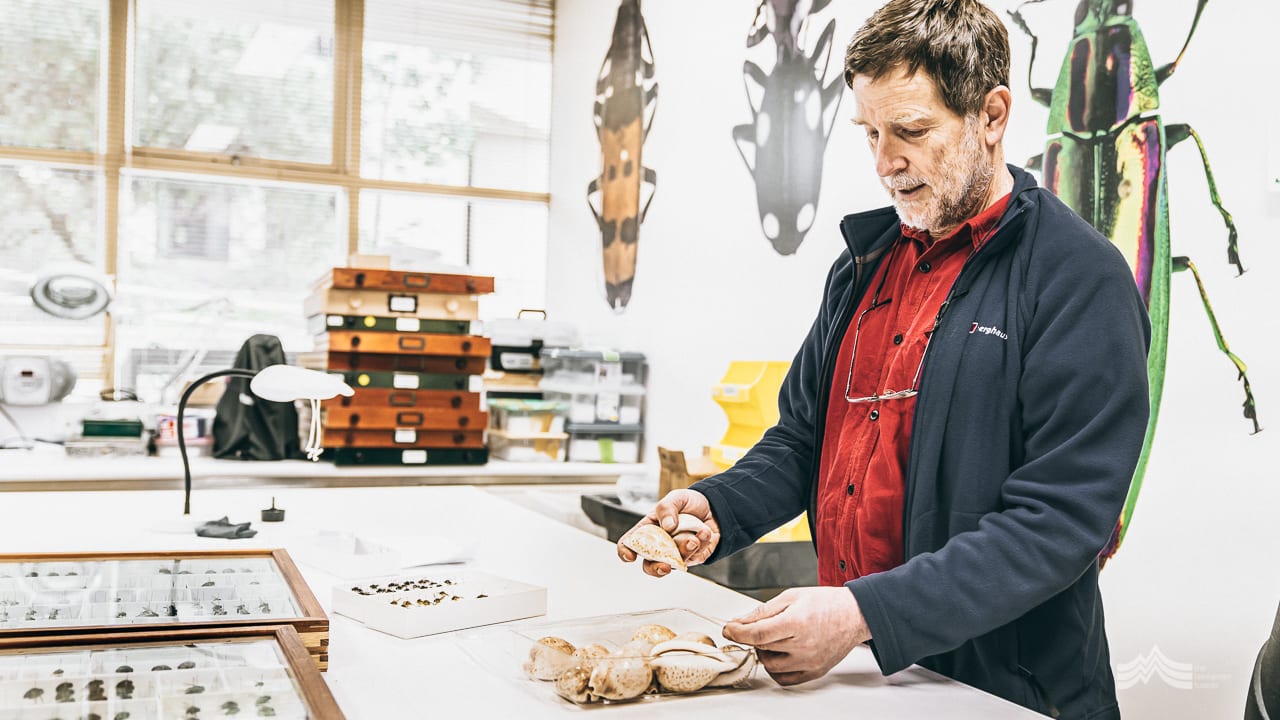
The first edition of the book was written when Simon was recovering from acute myeloid leukaemia – a condition that reared its head suddenly while he was helping to run a conservation training course in South America for Patagonian foresters. “I was feeling worse and worse each day,” he recalls. “I really just thought I had picked up a bug, but it got to the point where I went to have some tests. The doctors told me to return home immediately…and I arrived back in Hobart and went straight to hospital, I didn’t even go home first. Three rounds of chemo followed and fortunately that sent me into remission.”
Five and a half years later, Simon’s family were devastated to learn the disease had returned. Accompanied by a poor prognosis, he fell back into several rounds of chemotherapy treatment and eventually had a life-saving bone marrow transplant, courtesy of his brother as donor. “My life was saved – again, but it was months of recovery,” describes Simon. “And one of the hardest things for me was that I had to be in central Melbourne for the duration. I was meant to be recovering, but I had little access to the natural world and that in itself was really difficult for me. I really believe in the therapeutic value of being in, and observing, nature.”
Throughout the entire ordeal, Simon’s wife Chris remained, in his words, ‘an absolute rock’. “She’s been my primary carer through the whole process and I know I couldn’t have got through without her,” he says softly. “We got together towards the end of our Master’s degrees back in 91 and have been together ever since. Chris has been a great companion to me and an exemplary mother to our children. Her strength of character and her ability to develop wonderfully supportive social networks in our local community have made all the difference to our quality of life here.”
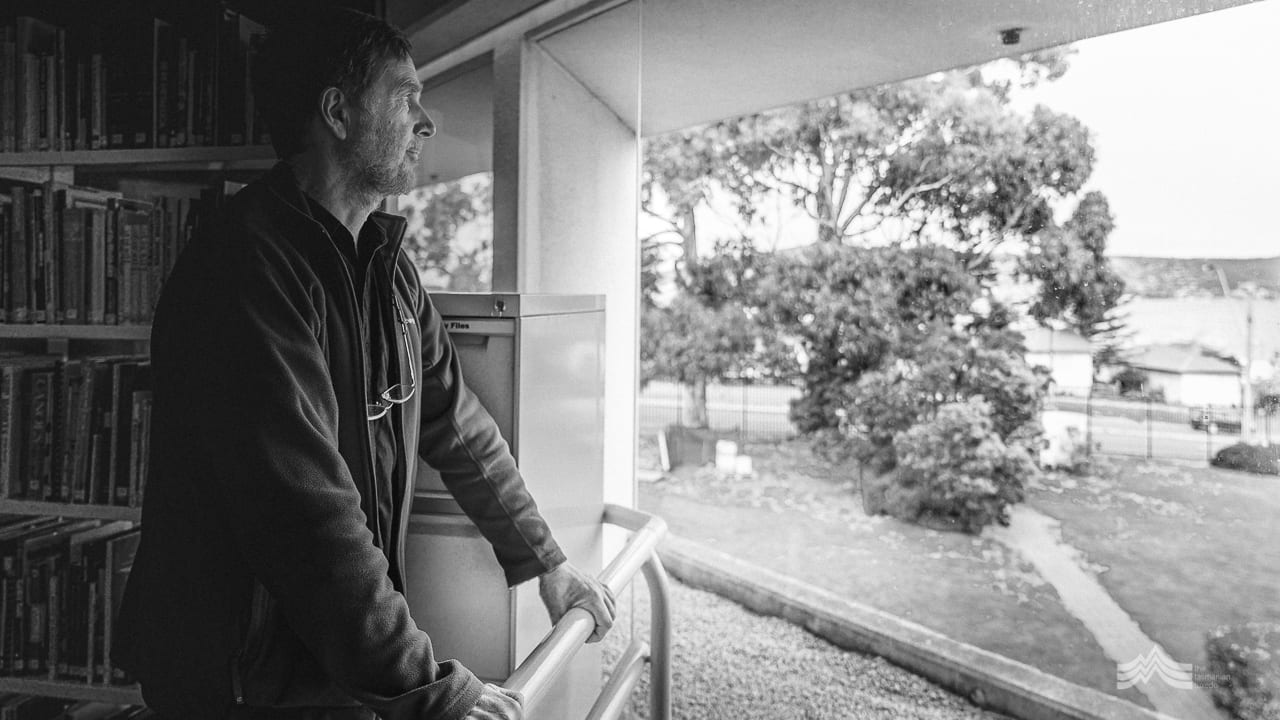
Simon took up a position at the Tasmanian Museum and Art Gallery (TMAG) in 2012 and today he remains the Senior Curator, Invertebrate Zoology. TMAG has benefitted from the generous donation of his extensive shell collection, and likewise the Tasmanian Forest Insect Collection also followed him to the Museum’s holdings. In his role as Senior Curator to date, Simon has worked tirelessly to ‘derandomise’ the invertebrate collection, rearranging it in conventional taxonomic order and bringing it up to contemporary curatorial standards. With tens of thousands of specimens stored and still awaiting classification, his progress to date is no mean feat.
“Essentially what we have here is a huge library of Tasmania’s species. It still requires further work to classify and order everything accurately. We continue to work through it as best we can; however, we encounter many of the same challenges as other museums in terms of funding and resourcing.”
Simon explains why TMAG’s invertebrate collection is vital. “Although most of this collection is unlikely to ever go on display – the public are accustomed to more glamourous exhibits – it is a crucial record of the species that we have here in Tasmania. We know it is highly valued by science today, but we just don’t know when elements of this record will be of use in the future and for what. Essentially, we are cataloguing it, curating it and preparing it for the unknown. Just recently we’ve had a PhD student in here working on cuttlebones. He’s been able to CT-scan and take samples from specimens dating back to the mid 1800s in order to determine the effect of ocean acidification on shell growth. If no one had thought to preserve those specimens well over 100 years ago, that simply wouldn’t have been possible – and they wouldn’t have had any inkling of the use to which they would be put. We just can’t foresee what these specimens may be useful for in another 50 or 100 years.”
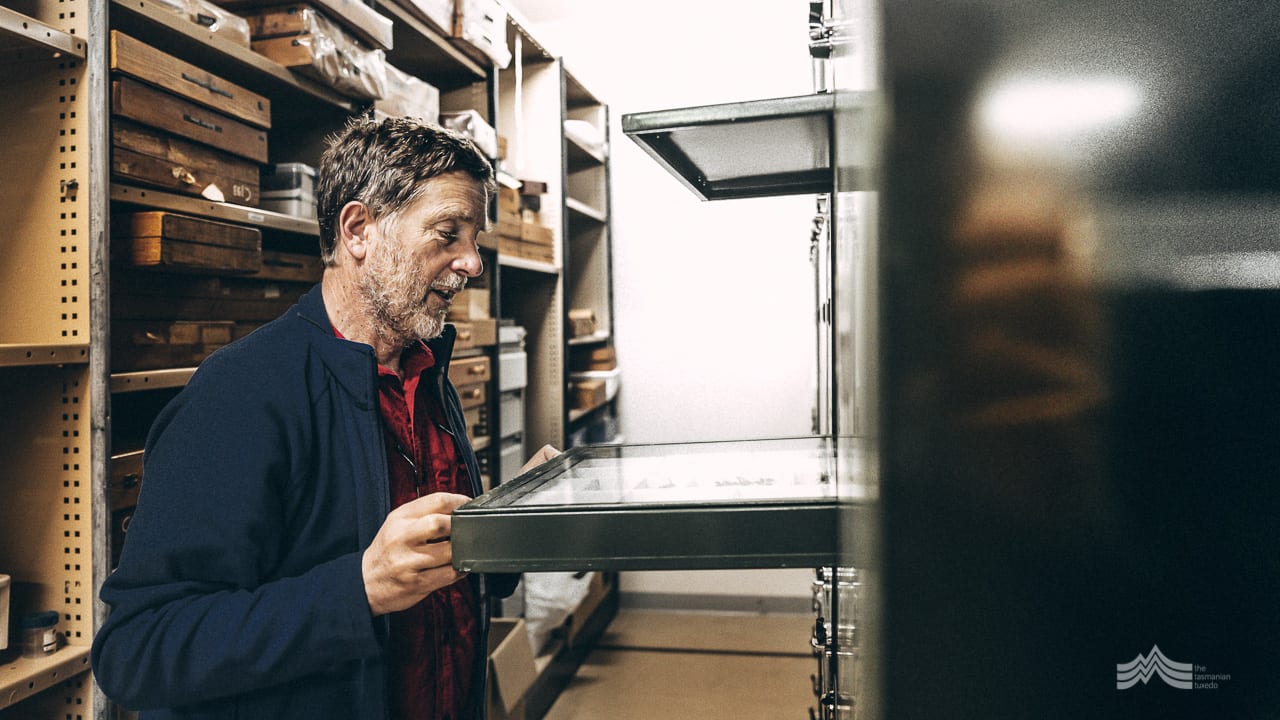
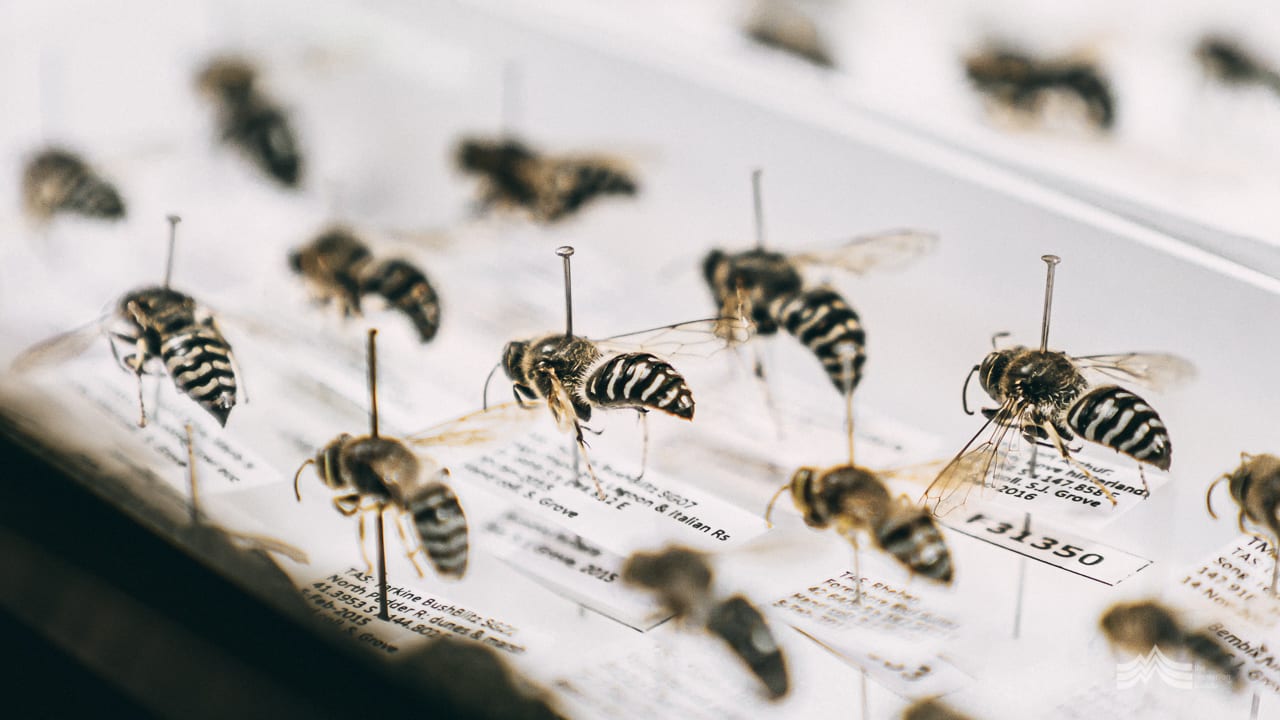
Simon’s own contribution to invertebrate research has also actively continued. To cite just one example, a dredging survey of deep-sea molluscs in the Port Arthur area, with fellow enthusiast Rob de Little, uncovered more than 600 species, many of which had not been seen for over 100 years, and some 40 of which were new to science.
Throughout his career Simon has frequently come across new species. More importantly, he has the skills and knowledge to be able to recognise them. His assistance to other scientists has also been honoured through the naming of several beetle and fly species after him, and even an entire genus of land snail endemic to Tasmania.
Communication is a strong thread throughout Simon’s career. Aside from numerous books and research papers, Simon’s staggering collection of over 2600 Tasmanian natural-history images remains a go-to for many invertebrate researchers and publishers. He regularly grants generous permission for his images to be shared, as well as donating time and skill as one of the state’s top identifiers on specialist social media networks. His involvement in app development, radio and TV stories, articles and all manner of presentations is endless.
The Molluscs of Tasmania website provides but a glimpse into the extent of Simon’s vast knowledge. “With help from a tech-savvy volunteer, we’ve been rebuilding an earlier version of this,” he explains enthusiastically. “It’s now redesigned into a much improved website that allows one to access details on over 1800 species.” Brimming with photographs, descriptions and distribution maps, it’s a treasure trove for anyone with even half an interest in the natural world.
Not content with the careful classification of Tasmania’s molluscs, a similar work is quietly under way behind the scenes. Tasmanian Insects Online currently catalogues close to 3000 species of beetles alone, with Simon predicting the final total set to lie somewhere around 8000 entries. It’s masterful and careful work.
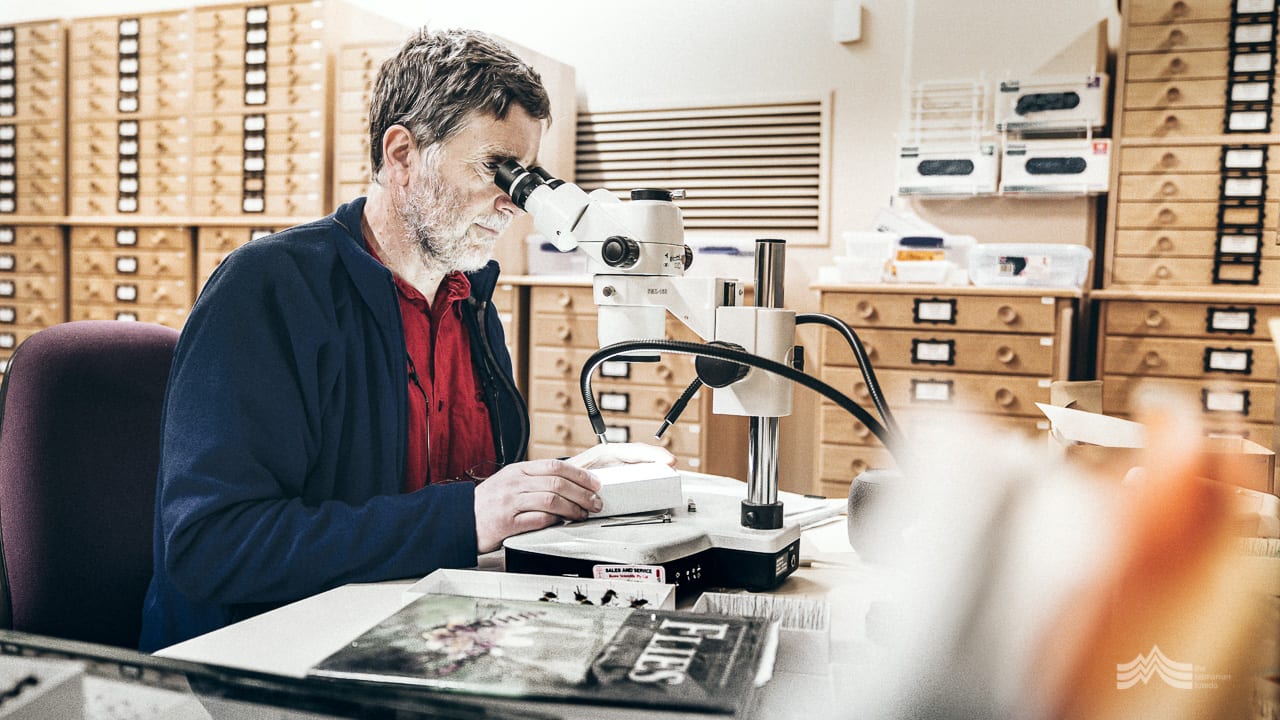
In November 2019, Simon was awarded what was conceived by its founder as the Nobel Prize of natural history in Australia. The Australian Natural History Medallion is presented each year by the Field Naturalists Club of Victoria to the person judged to have made the most meritorious contribution to the understanding of Australian natural history. The Medallion has been awarded annually since 1940 and in its time has honoured outstanding contributors in all fields of natural history studies and from every state and territory in Australia.
When asked if it’s possible to have a favourite invertebrate, a smile appears on Simon’s lips. “That’s a hard question, but there are some creatures that spring to mind because I love the story behind them. One example is Nannochorista, a genus of scorpion-flies with lots of unusual traits. They’re relatives of the southern snow-flea (another unusual Tasmanian insect) but in truth they’re neither flies, fleas nor scorpions but something different again. First described from Tasmanian mountains in the early 1900s, they were also later identified from New Zealand and then Patagonia. It’s species such as these that have cemented our understanding of the ancient supercontinent of Gondwana and its break-up, with Tasmania retaining many ancestral lineages of animals and plants that are shared with these now-disparate southern land-masses.”
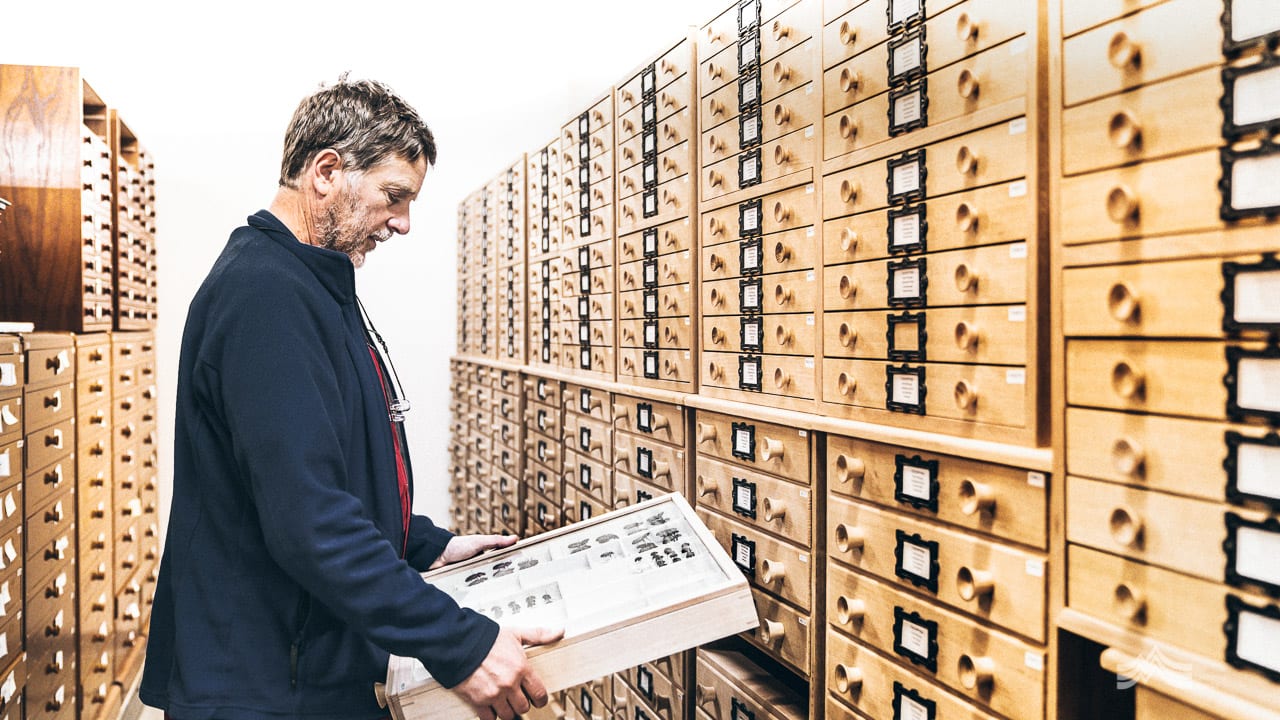
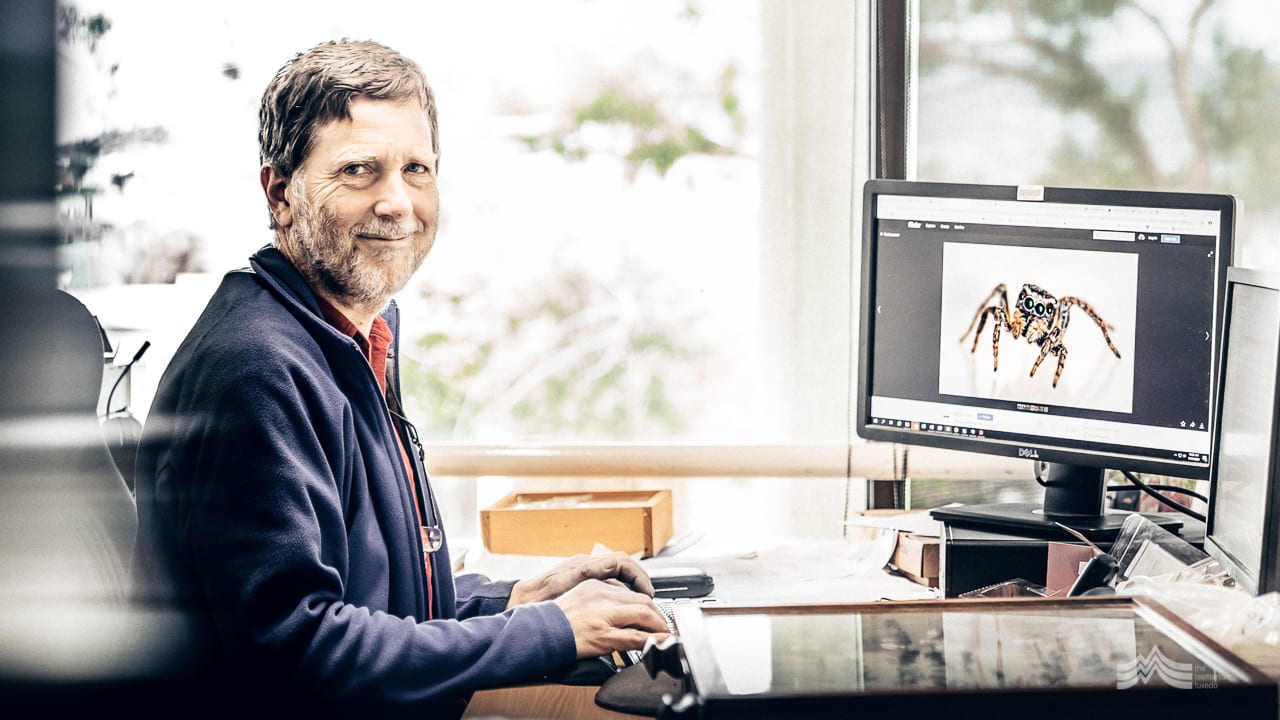
Follow Simon’s fascinating work via his TMAG Facebook page.
Visit the Molluscs of Tasmania website here.
